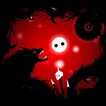

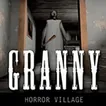

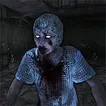

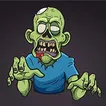













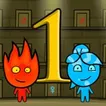















Horror Games: Delving into the World of Fear and Thrills
Horror games have carved out a niche in the gaming world that thrives on the human fascination with fear. This genre has evolved from simple jump scares to complex narratives that weave terror into every element of gameplay. The allure of horror games lies in their ability to tap into our deepest psychological fears, creating an immersive experience that keeps players on the edge of their seats.
The variety within horror games is vast, with sub-genres that cater to different tastes and scare thresholds. Survival horror games test the player’s ability to manage limited resources and make quick decisions under pressure, while psychological thrillers focus on narrative and character development to unsettle the player’s mind. Other sub-genres mix horror with action, adventure, or puzzle elements, offering a multifaceted approach to storytelling and gameplay.
At the core of these games are key elements that contribute to the terror and excitement. Atmosphere is meticulously crafted through visuals and sound design, creating an environment ripe for suspense. The narrative often plays with themes of isolation, the supernatural, or the macabre, drawing players into a world where the line between reality and nightmare blurs. Gameplay mechanics such as limited visibility, unexpected events, and challenging enemy encounters are designed to provoke a sense of vulnerability and heighten the tension.
The psychological allure of horror games is complex. They offer a safe space for players to confront their fears and experience the thrill of the unknown. The adrenaline rush associated with moments of fear is addictive for many, providing a form of escapism that is uniquely exhilarating. As the genre continues to evolve, it pushes the boundaries of what games can be, inviting players to delve deeper into the world of fear and thrills.
Scary Games: The Art of Crafting Fear
The essence of horror in video games lies in the delicate craft of manipulating the player’s emotions. Developers become artisans of anxiety, using a palette of psychological tricks to paint an experience that is as unsettling as it is irresistible. The adrenaline rush that comes from a well-timed scare is not just about the surprise; it’s about the anticipation of it. The artistry is in the build-up, the suspense, the sense that something is amiss, even if you can’t quite put your finger on it.
To emotionally engage players, developers employ a variety of techniques. They create environments that are claustrophobic and lighting that plays tricks on the eyes, suggesting movement where there is none. Sound design is crucial; a creaking floorboard, a distant scream, or the heavy breath of an unseen entity can be more terrifying than any visual cue. The narrative itself might unfold like a puzzle, with players piecing together a story that is often dark and disturbing.
A memorable horror game balances the overt scares with a pervasive sense of dread. It’s not just about the monsters that might leap out from the shadows, but also about the feeling that you’re never quite alone, and the fear of what might happen next. This balance keeps players in a state of tension, making the moments of terror more impactful when they finally arrive.
Ultimately, the art of crafting fear in horror games is about understanding human psychology. Developers tap into our primal fears and use them to create an experience that is both terrifying and thrilling. It’s this dance with the darker parts of our psyche that makes scary games so compelling and keeps players coming back for more, even when every instinct tells them to look away.
Survival Horror Games: A Battle Against Dread
Survival horror games epitomize the fight against fear, placing players in scenarios where every choice could mean the difference between life and death. These games are designed to simulate a high-stakes environment where resources are scarce, and the threat of danger is omnipresent. Players must navigate through shadowy worlds, often with limited ammunition and health, forcing them to choose when to confront the horrors that lurk in the darkness and when to evade them.
The gameplay mechanics in survival horror often include puzzle-solving, which adds an intellectual challenge to the visceral terror. Players must use their wits to unlock doors to safety or decipher cryptic messages that reveal the narrative’s deeper layers. This cerebral aspect of gameplay intertwines with the constant pressure of survival, creating a multifaceted experience that tests both the mind and the nerves.
Strategic decision-making is another cornerstone of the survival horror experience. Players may find themselves rationing supplies or deciding which path to take in a labyrinthine setting, knowing that each decision carries weight and consequence. The tension mounts as players weigh the risks and benefits of each action, with the ever-present dread of the unknown influencing their choices.
The thrill of survival horror games lies in this delicate balance between strategy and fear. The satisfaction of overcoming insurmountable odds, of outsmarting the game’s horrors, and surviving until the end provides a unique sense of accomplishment. These games not only entertain but also empower players by giving them the tools to conquer their in-game fears, which often resonate with the primal fears that exist in the real world. It’s a battle against dread that captivates and challenges, making survival horror a deeply engaging sub-genre for those who dare to face its trials.
Free Horror Games: Accessibility and Variety
The realm of horror games extends beyond the price tag, with a plethora of free options available that democratize the thrill of fear. These free horror games offer accessibility, ensuring that anyone with a computer or mobile device can dive into the eerie atmospheres and chilling narratives that define the genre. The absence of a financial barrier invites a diverse audience to explore the dark corners of horror gaming, fostering a wider appreciation for the craft of digital scares.
Variety is another hallmark of free horror games. Developers experiment with different styles and storytelling techniques, from minimalist graphics that leave much to the imagination to rich, detailed worlds that are visually haunting. The range of experiences available means that there is something for every type of horror enthusiast, whether they prefer psychological scares, ghostly tales, or creature-filled nightmares.
The accessibility and variety found in free horror games also serve as a breeding ground for innovation. Without the constraints of commercial success, indie developers can take creative risks, pushing the boundaries of the genre and exploring new ways to evoke fear. This leads to unique gaming experiences that might not be found in mainstream, paid titles.
In essence, free horror games are a testament to the genre’s adaptability and its ability to engage players from all walks of life. They prove that the power of a good scare doesn’t have to come with a price, and that the essence of horror gaming—its ability to tap into our deepest fears—remains potent, regardless of cost.
Multiplayer Horror Games: Shared Screams and Strategy
Multiplayer horror games have revolutionized the way we experience fear, transforming it from a solitary sensation to a collective endeavor. In these games, players are not alone in their trepidation; they share the screams, the tension, and the strategic planning required to navigate through nightmarish landscapes with friends or strangers alike. The presence of other players adds a layer of complexity to the horror experience, as individuals must not only manage their own survival but also consider the well-being of their team.
Cooperative scenarios in multiplayer horror games often require players to communicate effectively and work together to solve puzzles, manage resources, and make split-second decisions when faced with terror. The shared sense of dread and the need to rely on one another heightens the emotional stakes, making the gameplay more immersive and the scares more intense. On the other hand, competitive environments pit players against each other, with one or more taking on the role of the antagonist. In these games, the thrill of the chase and the cunning required to outsmart other players add a psychological edge to the horror.
The dynamic of multiplayer horror games also introduces an unpredictable element: human behavior. Unlike AI-driven characters, real players can be unpredictable, adding a sense of realism and spontaneity to the game. This unpredictability can lead to moments of genuine surprise and innovation in gameplay, as players might react to situations in ways that developers never anticipated.
In essence, multiplayer horror games offer a unique blend of camaraderie and competition, set against a backdrop of shared fear. They provide a space where players can bond over common challenges and celebrate their collective victories against the darkness. The strategic elements of gameplay, combined with the unpredictable nature of human interaction, ensure that each playthrough is a fresh descent into terror, where strategy and screams go hand in hand.